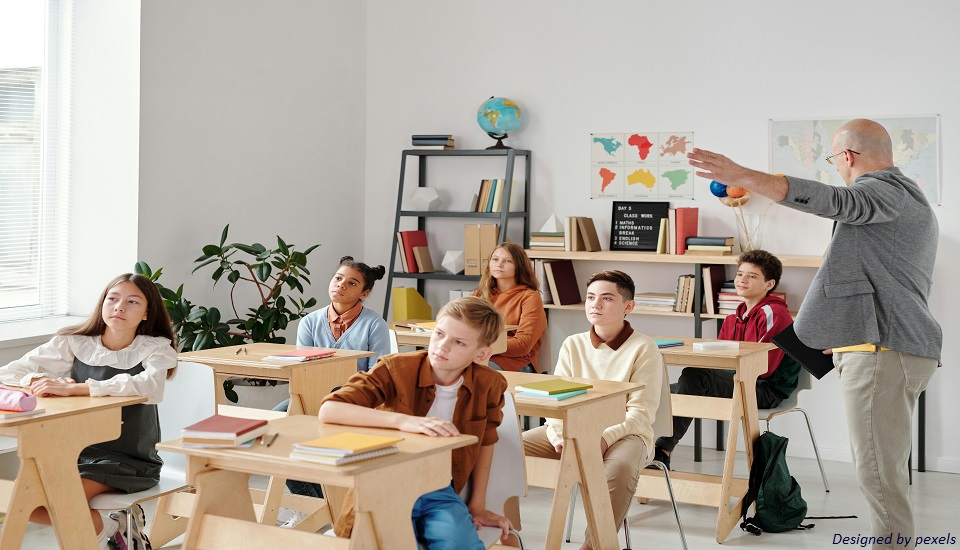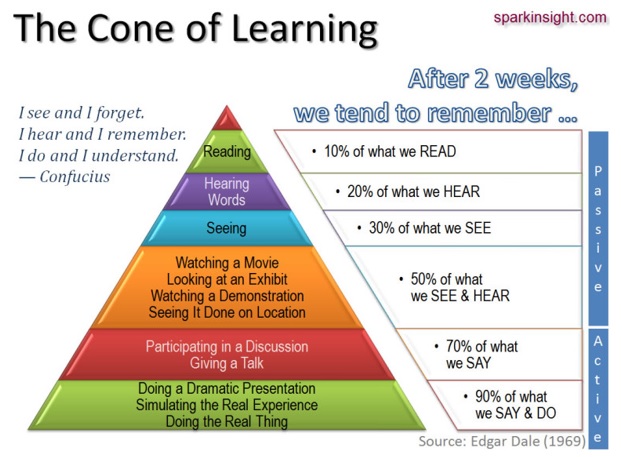Engage All Learners! 7 Fun Multisensory Activities To Supercharge Your Lessons
29th April 2024
In today’s digital world, where distraction is everywhere, keeping students engaged with the learning process in the classroom is very difficult. In most of the cases in the classroom, students just passively listen to the lesson. Only a few of them truly have a grasp of the lesson.
If as a teacher you are also witnessing a similar situation and want to improve the learning experience of students. In that case, the multi-sensory method can be the best way to achieve it.
Every student has a different way of learning and needs. Multi-sensory ways of teaching and methods can be the best way to cater to students’ different learning needs and engage disinterested students with the lesson.
However, many teachers might get confused and don’t have a clear idea about how to implement the Multi-sensory learning method in the classroom.
If you also have the same doubt, then we have got you covered.
In this blog post, we will be sharing some of the best practical strategies to implement Multi-sensory learning methods in your classroom to make your classroom a dynamic and interactive classroom.
Before moving to the topic, can we ask you a question? Do you follow us on Social Media? We regularly share upgraded educational content, tips, feedback, and more. Check us out by clicking the profiles here - Facebook / Twitter / LinkedIn / Pinterest / Instagram / YouTube
So, without any further delay, let’s get started.
What is Multi-Sensory Learning?

Source: northcoasted.com
Multi-sensory learning is a method which involves children to use more than one senses at a time. Multi-sensory way of teaching goes beyond listening and speaking and it encourages students to use their all senses (Taste, Smell, Touch, Sight, Hearing, and Movement).
During any lesson learning students are not expected to use all senses at once. However, in the multi-sensory lesson, students do engage with more than one sense.
7 Fun Ways To Implement Multisensory Learning
1. Interactive Storytelling Method
Interactive storytelling is a method that involves narration and sensory-rich experiences. This helps students to engage better with any taught lesson and it also promotes comprehension skills, critical thinking, and creativity.
Steps of Implementing Interactive Story-telling
Choose a Topic: Start by selecting a relevant topic or theme that aligns with the curriculum and learning objectives.
Incorporate Various Senses: To enhance the storytelling of any topic you can consider incorporating various props, visuals, audio, and gestures which will engage different senses of students.
Engage Your Students: You can improve your engagement rate in the classroom by asking intriguing questions and engaging them in role-activities and interactive activities which improves understanding level and also promotes collaboration.
2. Creating Sensory Stations
You can consider creating dedicated areas within the classroom for your students where they can interact, explore, and manipulate different objects, and materials available which stimulate different senses and give an experiential learning experience.
Steps of Creating Sensory Stations
Choose a Dedicated Area: Start by selecting a dedicated area for creating a sensory station or zone in your classroom. Consider adding textured materials, audio stations, visual stations, and sound-related activities.
Use Different Activities: Try to use and rotate different activities and materials to keep students engaged and cater to different senses.
Observe and Monitor: Consider monitoring your students to understand their preferences and according to that you can make necessary changes in stations.
3. Kinesthetic Learning Activities
Kinesthetic learning activities improve the motor-skill development of students. It involves different movements, physical movements, and hands-on exploration which provides an experiential learning experience and enhances student engagement.
Steps of Creating Kinesthetic Learning Activities
Promote Movements: You can encourage students to participate in various physical activities such as- sports, dancing, and acting. These activities not only improve the movement of students but also engage their minds.
Utilize Manipulative Materials: You can provide materials such as- blocks, puzzles, and different manipulative objects with which students can interact. This provides students with an experiential learning experience.
Align Kinesthetic Activities to Curriculum: Lastly, consider aligning all the kinesthetic activities with the curriculum and student’s learning goals, which will make these activities more meaningful.
4. Incorporate Technology Tools
You can consider different digital tools and platforms such as- Classpoint, Kahoot, One panel, etc. to make the learning experiences engaging and meaningful for students. It also promotes digital literacy skills within the classroom.
Steps of Integrating Technological Tools
Select The Right Tools: Start by selecting the right technological tools that can align with the curriculum goals, students’ learning preferences, and needs.
Integrate Technology In the Right Way: Consider incorporating technology within your lesson plans to ensure that it’s perfectly aligned with your own instructional goals which improve the student’s engagement.
Provide Guidance: Lastly, learning and dealing with new technological tools for students can be challenging. However, you can provide the necessary guidance and support to your students to improve their learning experience and digital literacy skills.
5. Integrate Music
Incorporating music into your lesson plan can increase student engagement, retention rate and through auditory stimulation stimulates various sensory experiences.
Steps of Integrating Music
Select & Align Music: Select the right music and rhythm that perfectly aligns with the student’s lesson objectives.
Integrate Various Musical Activities: Consider integrating musical activities like- singing and rhyming which reinforces lesson content learning and also provides auditory and kinaesthetic learning experiences.
Encourage Self-Reflection: Encourage your students to reflect upon the fact that how music can improve their understanding, engagement, and retention rate of key lesson concepts.
6. Incorporate Visual Maps and Organizers
Encouraging students to use visual maps and organizers can help them to organize their learning information, and become able to understand complex concepts through visual processing and spatial experience.
Steps of Integrating Visual Maps and Organizers
Craft Visual Aids: You can start crafting different visual diagrams, organizers, and visual maps that represent key learning concepts and processes.
Encourage Them To Explore: Encourage your students to develop their own visual maps and organizers which will help them to understand complex concepts and synthesize learning information.
Encourage Collaboration: Instill a collaborative learning environment by conducting group activities that encourage students to create, share, and discuss visual organizers and maps.
7. Incorporate Outdoor and Experiential Learning
Spending and exploring the outside environment can create a lot of learning opportunities that provide students with hands-on learning experience, and environment exploration. On top of that it enriches student’s creativity, curiosity, and connection with nature through sensory-rich activities.
Steps of Incorporating Outdoor and Experiential Learning
Make Outdoor Activities Plan: You can consider planning out some field trips, outdoor activities, or just simple walks in nature to help students have an experiential learning experience.
Encourage Students To Explore: Encourage your students to explore and observe nature and provide inquiry-based learning experiences in outdoor settings.
Encourage Self-Reflection: Encourage your students to journal their nature experiences and discuss them with their peers which will ultimately help them to understand outdoor learning experiences and make connections with their lesson content.
Leverage Multi-Sensory Learning Method For Student’s Benefits
In this distracted world, keeping students engaged in the classroom is next to impossible. However, you can take the help of Multi-sensory learning methods to make learning fun and engaging for students because it involves all senses of students and keeps them hooked on the learning process. Consider incorporating all the above-mentioned Multi-sensory learning activities which will increase the engagement and retention rate of students.
If you’re looking for more creative ways to increase the engagement rate of your students in the classroom, then consider pursuing courses like International Teaching Diploma Courses in Kolkata, where you will get support from top expert trainers who will also help you to become a capable teacher in the education industry.
We believe education should be accessible for everyone. That’s why we don’t charge for our blogs. Find the right course that will help you in your career with us, contact us at - 1800–212–6400. You can mail us at act@asiancollegeofteachers.com.
Written By : Abhishek
Leave a Reply

